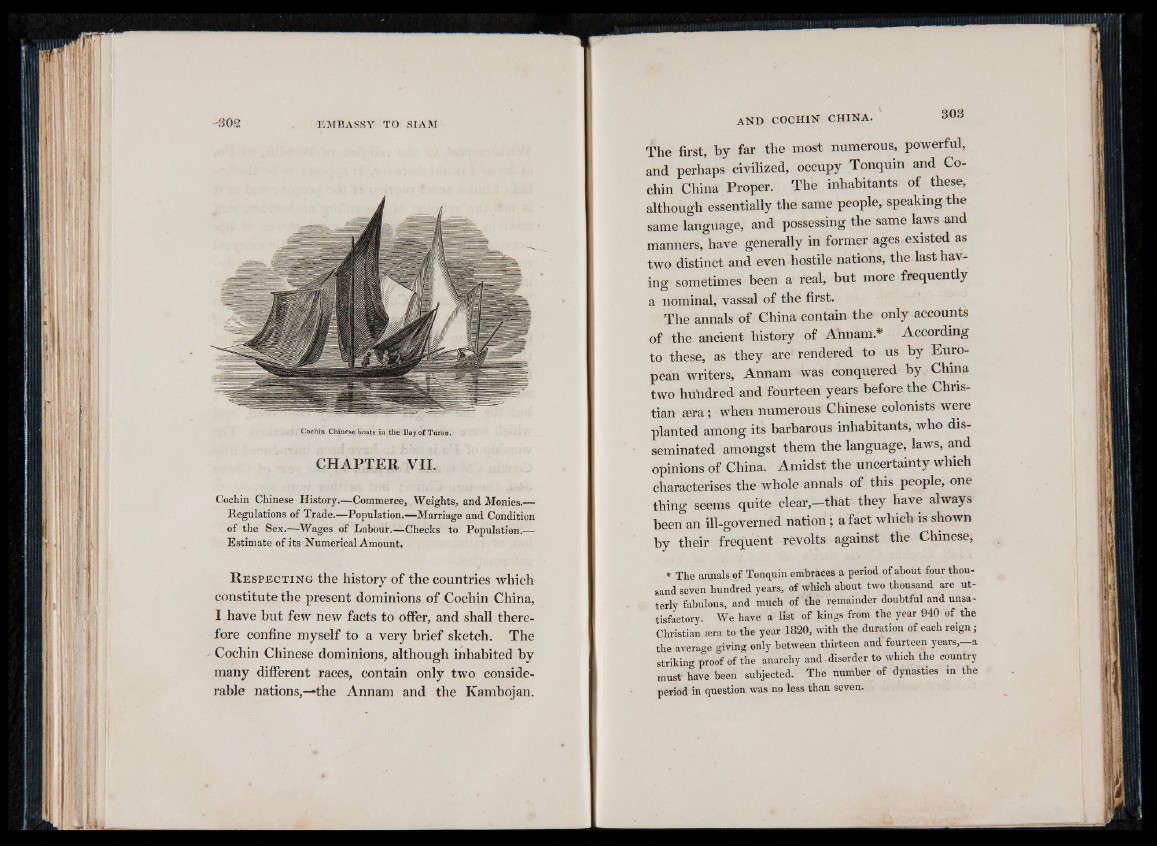
Cochin Chinese boats in the Bay of Turan.
CH A PT ER VII.
Cochin Chinese History.—Commerce, Weights, and Monies.—
Regulations of Trade.—Population.—Marriage and Condition
of the Sex.—Wages of Labour.—Checks to Population.—
Estimate of its Numerical Amount.
R e s p e c t in g the history of the countries which
constitute the present dominions, of Cochin China,
I have but few new facts to offer, and shall therefore
confine myself to a very brief sketch. The
Cochin Chinese dominions, although inhabited by
many different races, contain only two considerable
nations,—^the Annam and the Kambojan.
The first, by far the most numerous, powerful,
and perhaps civilized, occupy Tonquin and Cochin
China Proper. The inhabitants of these,
although essentially the same people, speaking the
same language, and possessing the same laws and
manners, have generally in former ages existed as
two distinct and even hostile nations, the last having
sometimes been a real, but more frequently
a nominal, vassal of the first.
The annals of China contain the only accounts
of the ancient history of Annam* According
to these, as they are rendered to us by European
writers, Annam was conquered by China
two hubdred and fourteen years before the Christian
eera; when numerous Chinese colonists were
planted among its barbarous inhabitants, who disseminated
amongst them the language, laws, and
opinions of China. Amidst the uncertainty which
characterises the whole annals of this people, one
thing seems quite clear,—that they have always
been an ill-governed nation; a fact which is shown
by their frequent revolts against the Chinese,
* The annals of Tonquin embraces a period of about four thousand
seven hundred years, of which about two thousand are utterly
fabulous, and much of the remainder doubtful and unsatisfactory.
We have a list of kings from the year 940 of the
Christian ana to the year 1820, with the duration of each reign;
the average giving only between thirteen and fourteen years, a
striking proof of the anarchy and. disorder to which the country
must have been subjected. The number of dynasties m the
period in question was no less than seven.